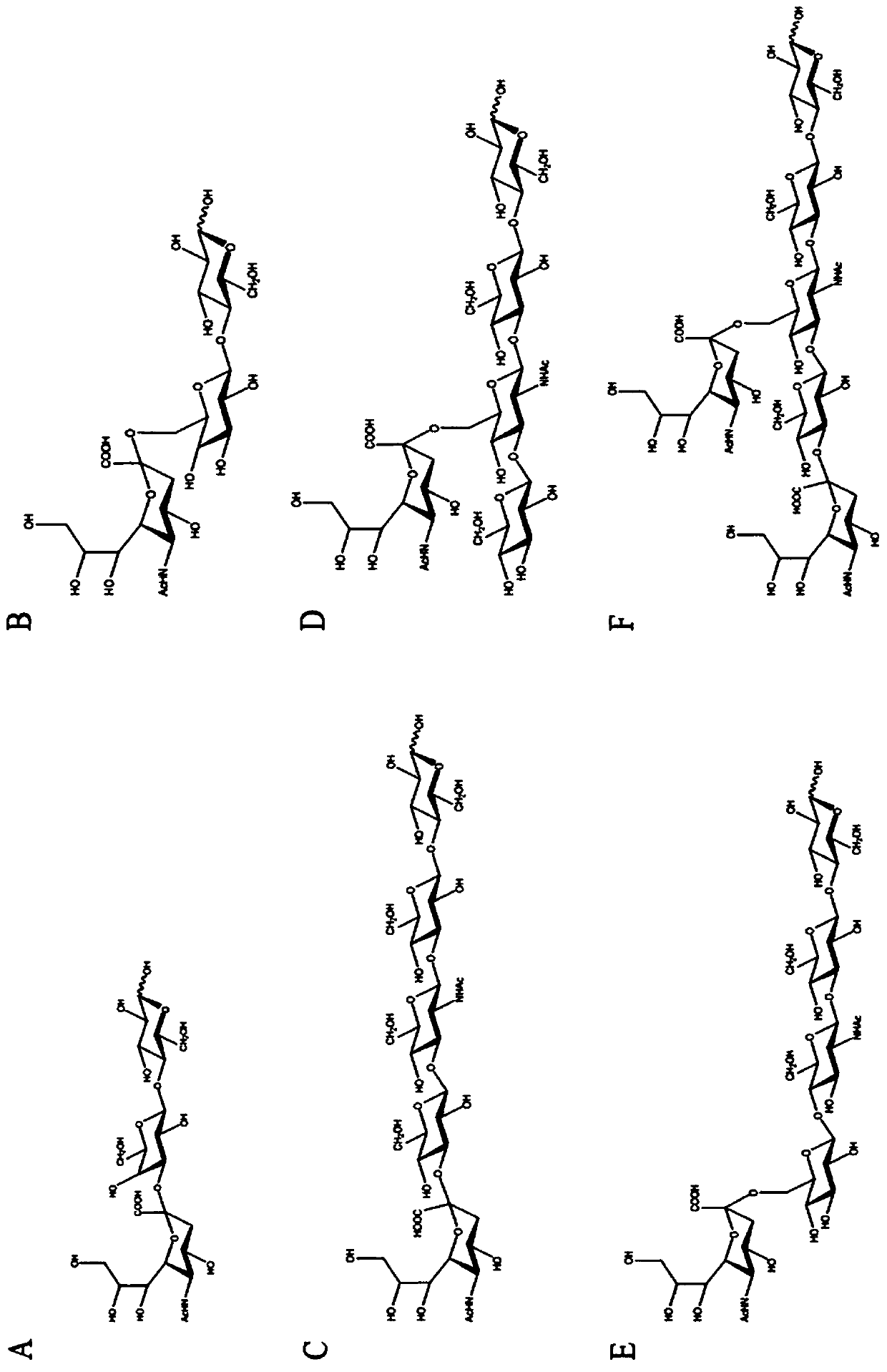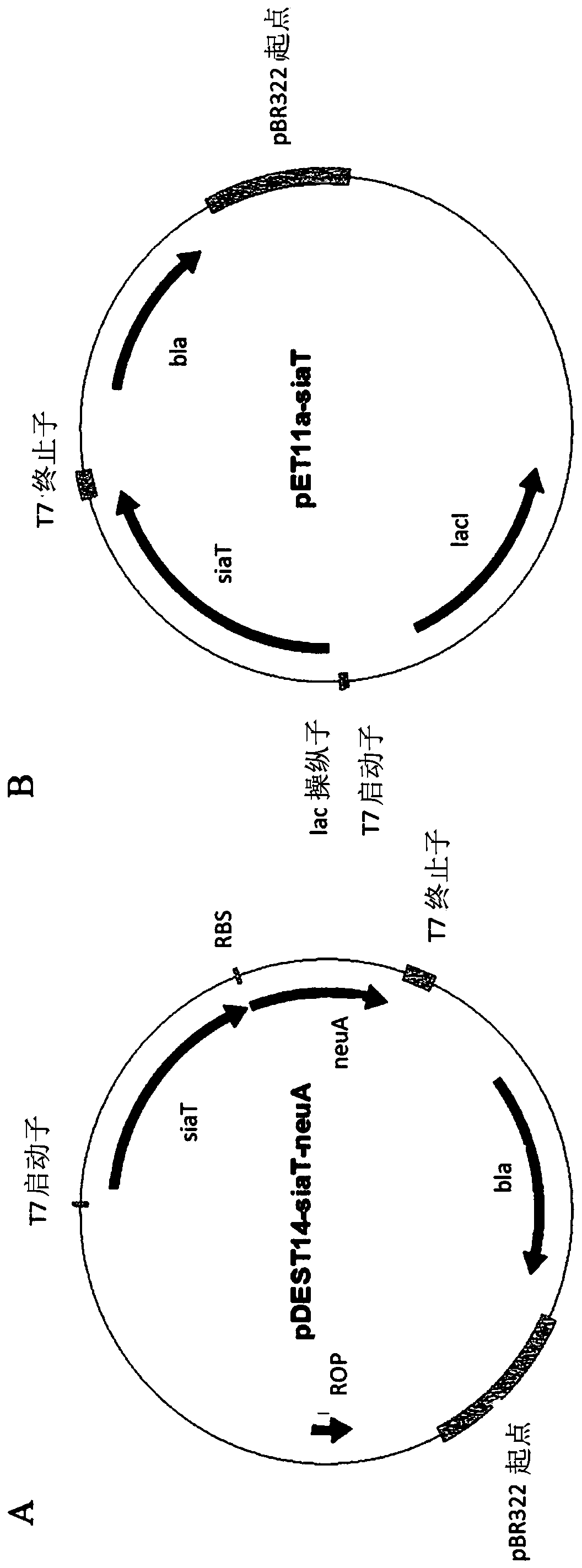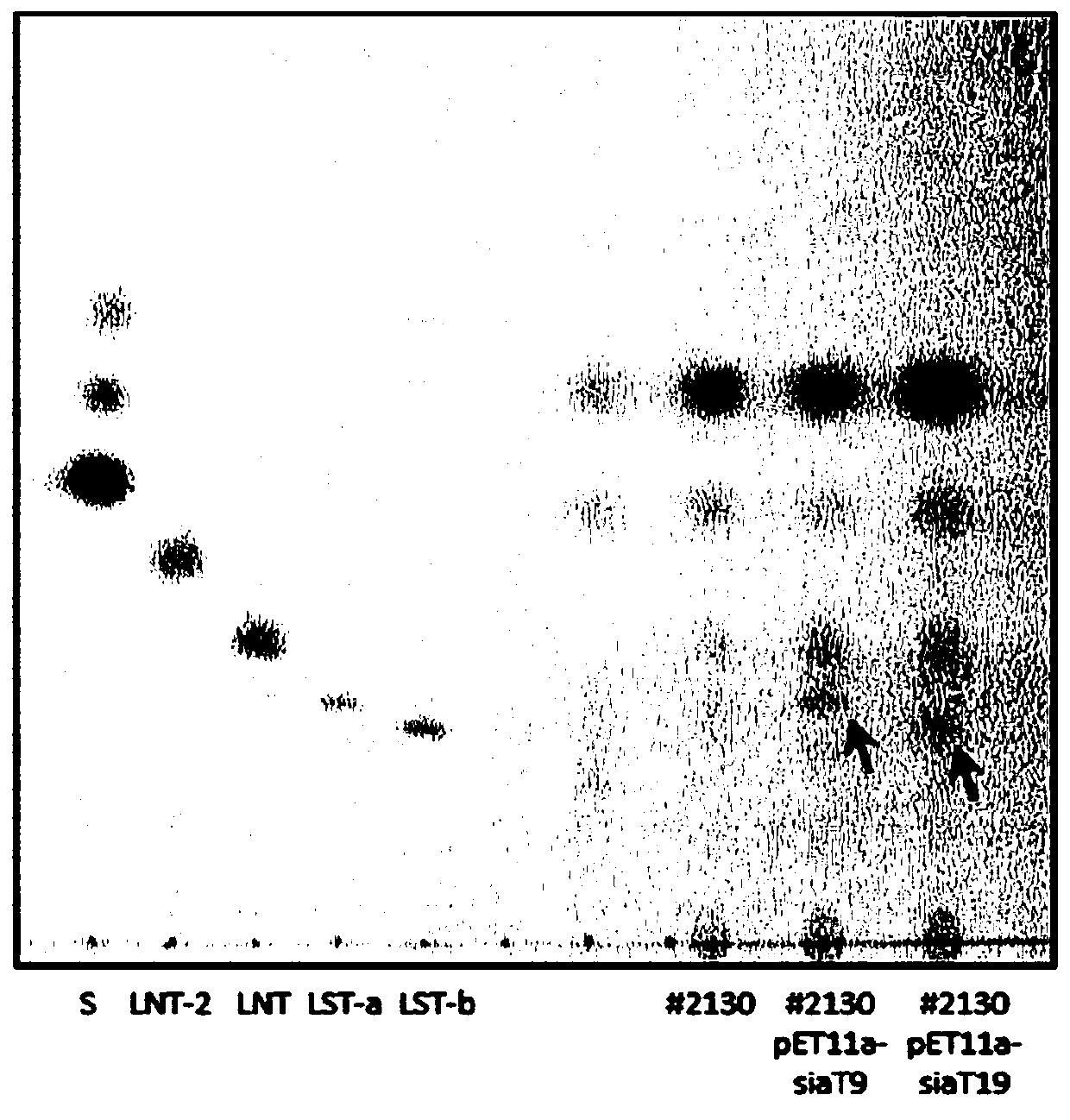Sialyltransferases and their use in producing sialylated oligosaccharides
A technology of sialyltransferase and sialylation, which is applied in the field of providing nutritional preparations, can solve problems such as inability to obtain high purity, hinder extensive scientific evaluation of health beneficial properties, and limit production methods
- Summary
- Abstract
- Description
- Claims
- Application Information
AI Technical Summary
Problems solved by technology
Method used
Image
Examples
Embodiment 1
[0141] Example 1: Development of E. coli Neu5Ac producing strains enabling in vivo screening of sialyltransferases using lactose as acceptor
[0142] Metabolic engineering includes mutagenesis and deletion of specific genes, and genomic integration of heterologous genes, respectively. The genes lacZ and araA were inactivated by mutagenesis using mismatch oligonucleotides as described by Ellis et al. (Proc. Natl. Acad. Sci. USA 98:6742-6746 (2001)).
[0143] Genomic deletions were performed according to the method of Datsenko and Wanner (Proc. Natl. Acad. Sci. USA 97:6640-6645 (2000)). To prevent the intracellular degradation of N-acetylneuraminic acid, the genes encoding N-acetylglucosamine-6-phosphate deacetylase (nagA) and glucosamine-6-phosphate deaminase (nagB) and the genes encoding N- Acetylmannosamine kinase (nanK), N-acetylmannosamine-6-phosphate epimerase (nanE), N-acetylneuraminic acid aldolase (nanA) and sialic acid permease (nanT) The entire gene cluster for N-ac...
Embodiment 2
[0155] Example 2: Development of E. coli strains enabling in vivo screening of sialyltransferases using lactose as acceptor but requiring exogenous addition of sialic acid
[0156] E. coli BL21 (DE3) strain #942 was used to establish a screening strain for plasmids encoding sialyltransferases 27 to 100. Therefore, to enable sialic acid uptake and nucleotide activation, the genes nanT and neuA were integrated, respectively. The nanT gene (accession number B21_03035) encoding the major facilitator superfamily transporter of E. coli Neu5Ac was amplified from genomic DNA of E. coli BL21(DE3) and coded for the neuA gene (accession number AF305571) from Campylobacter jejuni sub-optimized and obtained by synthesis. These genes were cloned under the constitutive tetracycline promoter P tet The operon under the control, and use EZ-Tn5 transposase to the resulting expression fragment tet -neuA-nanT-lox66-kan-lox72> (SEQ ID NO: 73) was integrated to obtain screening strain #1730.
[0...
Embodiment 3
[0159] Example 3: Generation of Plasmid Collections Encoding Sialyltransferases
[0160] Gene sequences of characterized or putative sialyltransferases were received from literature and public databases. Since sialyltransferase is generally described as showing higher activity when its signal peptide is missing, the inventors used the online prediction tool SignalP (Petersen et al., Nature Methods, 2011Sep 29; 8(10):785- 6) The corresponding protein sequence was analyzed. Genes were synthesized by GenScript Inc. either as annotated full-length forms or, when signal peptides were predicted, as truncated variants lacking the N-terminal signal peptide (Table 4).
[0161] Sialyltransferases 1 to 26, respectively, were subcloned as operons together with neuA into pDEST14 by SLIC using gene-specific primers (Table 2), resulting in a commonly used type of plasmid: pDEST14-siaT-neuA. The remaining sialyltransferases 27 to 100 were directly subcloned into plasmid pET11a by GenScript ...
PUM
 Login to View More
Login to View More Abstract
Description
Claims
Application Information
 Login to View More
Login to View More - R&D
- Intellectual Property
- Life Sciences
- Materials
- Tech Scout
- Unparalleled Data Quality
- Higher Quality Content
- 60% Fewer Hallucinations
Browse by: Latest US Patents, China's latest patents, Technical Efficacy Thesaurus, Application Domain, Technology Topic, Popular Technical Reports.
© 2025 PatSnap. All rights reserved.Legal|Privacy policy|Modern Slavery Act Transparency Statement|Sitemap|About US| Contact US: help@patsnap.com



